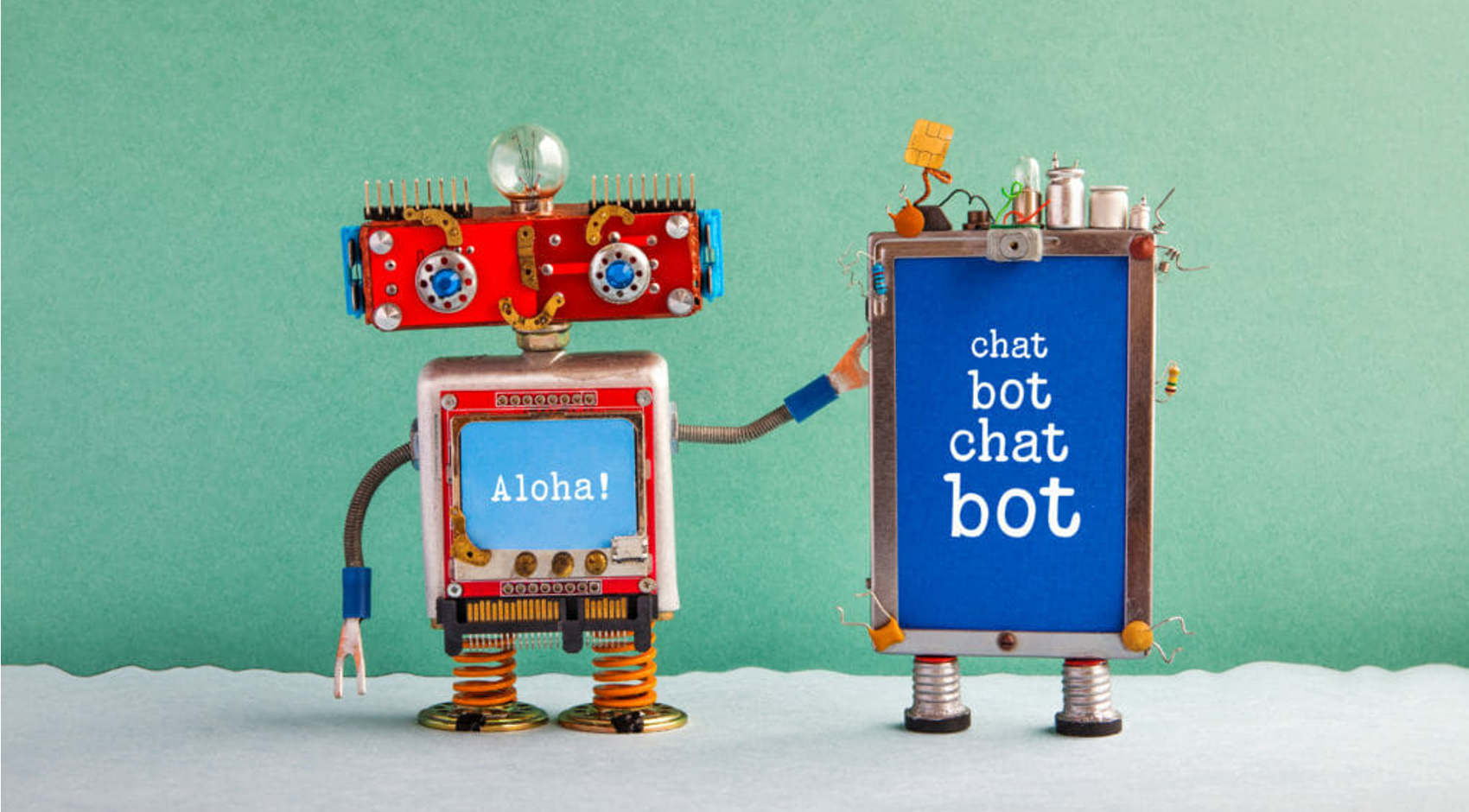Topics in this article
Use cases and possibilities
Industry experts agree: chatbots will not replace people in the coming years. Rather, they are an asset to customer service and support employees in routine tasks. What are the possibilities of chat bots today and what are the most successful use cases?
That’s why chatbots are a future technology
Chat offers have been conquering various industry sectors for years – these include customer service, marketing and sales. The communication robots serve several major purposes.
First and foremost, they relieve employees of routine inquiries. Often, customers contact us with very similar questions or requests: How do I cancel my mobile phone contract? Where is my order? Is the T-shirt also available in size L? The list of standard inquiries is long. Some companies are therefore already using chatbot technology to solve simple problems automatically and quickly. This gives the service staff more time to handle complex inquiries and individual customer requests. This also has the positive effect of increasing customer satisfaction. Chat offers also optimize the customer experience.
Another advantage of chatbots is related to the resources of a company. Companies can save costs by efficiently processing service requests – some providers advertise support savings of up to 50%.
So chat bots do three things:
- Reducing the workload of employees
- Increase of customer satisfaction
- Cost saving for companies
How chat bots work
Chat bots are available for text and voice input and work via different approaches. Two levels are important for the successful use of chat bots. The first is the intention level, i.e. the ability to recognize the conversation in order to search for answers in the appropriate source. The second level is about entities. These are all the relevant information about an object that makes it unique.
The interpretation of the first level may be simple for a chatbot, but the second level can quickly become complex. For a meaningful and “flowing” interaction, the entire information content of the ongoing conversation must be qualified and classified before each response. In order to integrate such an intelligent system, internal databases and company knowledge must be included. In addition, the development of a conversation architecture is required to cover all possibilities in the conversation. Some companies also use external APIs to retrieve further information on a specific topic from the Internet.
Chatbot Categories
- Rule-based chat bots: Here the user receives answer options that have been defined and programmed in advance. So if a question is asked that was not considered in advance, the chat bot will already reach its limits. They are therefore particularly suitable for small marketing campaigns and simple question answers.
- AI-based chat bots: Thanks to artificial intelligence and NLP (Natural Language Processing) technology, the chat bot can imitate a real, human-made conversation. The advantages of AI-based chat bots are manifold: Complex sentences and dialogues are possible; they work via context; they have more efficiency and savings potential; AI systems are constantly learning, work in real time and so on. However, it takes time to develop them and the initial costs are relatively high.
Useful chatbot deployment for your company
In the run-up you should distance yourself from providers who promise you the “setup of your own chat offer in just a few minutes”. Because, as already shown, good chat bots depend on intensive preparatory work – no matter if AI- or rule-based. These applications are possible today:
- Chatbots for the preparation of the service staff
Key data such as customer number, name or other details can be requested even before the customer meeting. - Chat offers as sparring partners during customer conversation
The service employee can use real-time response options provided by the chatbot for the conversation with the customer. - Proactive Chatbots
These are used to proactively send information such as order status to customers or employees. - Chatbots as messaging service support
Several mobile apps such as Novi already use chat bots to ensure that their users receive personalized messages automatically and to be able to respond interactively to queries. - Conversation chatbots for personal advice
Depending on the chatbot category, complex consulting conversations are conducted via Messenger or simple questions are answered.
Chatbot success stories
Numerous international companies have been using chat offers for many years for a wide variety of requests. For example, both the Royal Bank of Scotland (Luvo) and Mastercard (Kai) use chat offers for customer enquiries.
The Erasmus University Rotterdam (EUR) has also decided to try out the chatbot technology due to the increasing demand for tuition fees. This has resulted in “Desiderius” – a chatbot that provides daily support to EUR students with practical questions.
The insurance industry also achieves better customer service through chatbots. Insurance companies such as Allianz, Axa or Lemonade benefit from real-time reactions with customers that were not possible before, and by using chat bots, they simply process customer enquiries in the same time.




